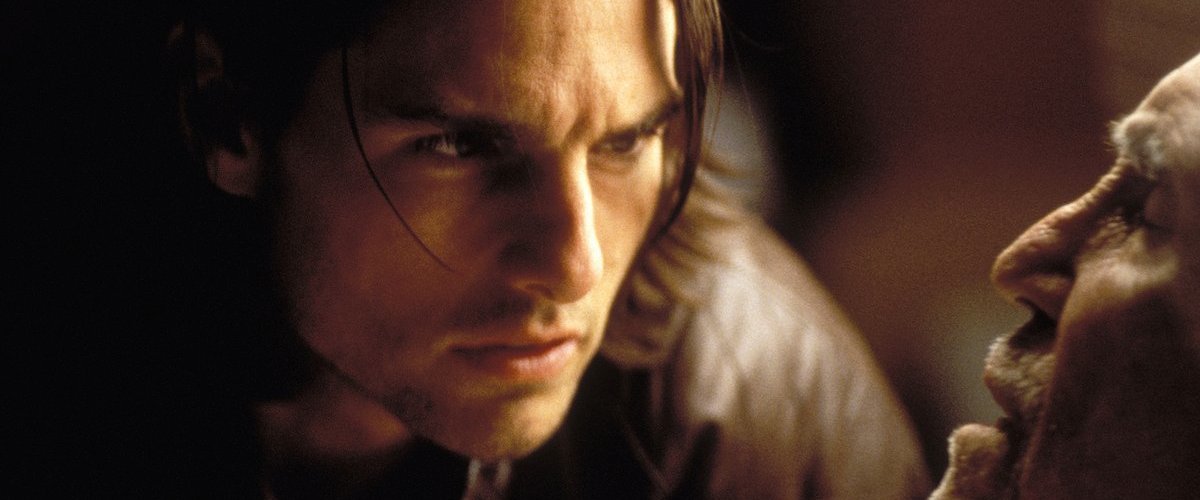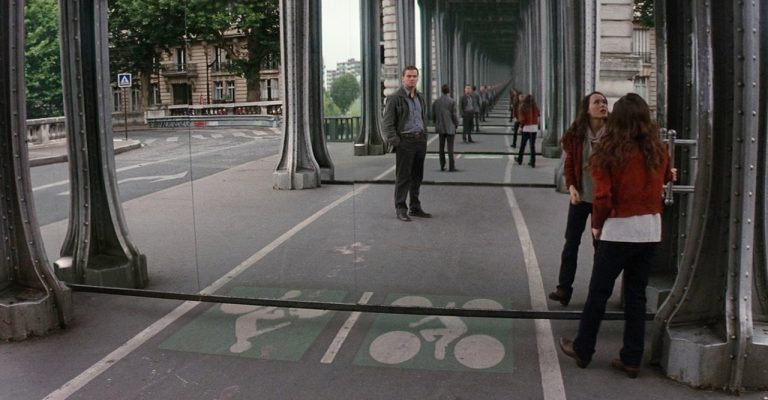There is an insidiously sly nature to how Paul Thomas Anderson constructs his melodramatic epic, Magnolia (1999). It has its ties all the way back to the Aristotelian concept of never allowing a piece of writing to privilege the visibility of the author and its vindication in Victorian times, when authors deliberately voiced themselves through the lead character by addressing the ‘reader’ directly. What Anderson manages to capture in this film is an uncannily unique ability to let the writer of a film visibilize himself as a separate entity altogether from the director, since they are the both the same in the case of this film.
The frame narrative of Magnolia uses three allegedly ‘real’ incidents of preternatural coincidences to establish that what we are to witness in the film are not uncommon occurrences but that such instances keep taking place at all times. An expectation is already set in terms of what the plot will outline. The final of these three events is a marvelous account of how a failed suicide turned into an accidental murder where the victim became an accomplice in his own death. It is material that is capable of being a thrilling featurette in its own right.
Also, Read: Magnolia (1999): An Exhaustively Detailed And Extremely Refined Study Of The Human Condition
And yet, somehow, none of the fantastical quality of these stories has a parallel in the actual narrative of Magnolia. While the plot’s interlinked nature creates this world where the characters are all connected to each other despite in many instances, having no real relationship with one another, none of them are as strange as say, a man getting murdered by three vagrants whose surnames align to create the name of the victim’s residential area. It is a very tightly constructed plot, despite its length and yet the only moment when a real connection between all of the characters at once is depicted is when they are all singing along to a broadcast of Aimee Mann’s ‘Wise Up’.
In the following year, Guillermo Arriaga’s script for ‘Amorres perros’ would go on to tell a somewhat similar story about how the fates of three sets of characters are intertwined with one tragic incident and succeeded in creating a more surprising series of episodes than Magnolia’s, without any foreshadowing about the plot’s parallel with real extraordinary happenings.
Related Read to Magnolia (1999): Every Paul Thomas Anderson Movie Ranked
Indeed, that is the crux of Magnolia’s plot. It is not a story about incredible happenings but one where the author is to present himself as the omnipresent being. When we watch a film relying on its characters, we empathize with them because they have been singled out by the writer to arouse our interest. Things happen to them because they have been chosen as the subject of those affairs. In this world, the centrality provided to certain individuals makes them the living breathing entities of that fantasy. Such films are not ones we feel invested in because they are merely representing reality in some form but because we as the audience are made to believe that what is happening and to those it is happening are all real, by a nonverbal faith in the writer as creator. The author subsumes themselves into the elements of this world, which draws our attention to it as it makes each world unique, while remaining invisible at all times.

In Magnolia, what happens with the characters is what would happen in any plot that adheres to unity of time, place and action with a plethora of characters. Their link is necessary, not special since it is not an anthological film. It is the climactic ‘frog rain’ scene that destroys this faith we have in the world as being a reality in its own right which has been created and instead are instantly made to realize how Anderson the writer proudly appears in the foreground, unabashed in his presentation of the writing as his creation and to be viewed as so.
While having a narrator address the audience in the opening is itself an act of breaking the fourth wall, at no point during the story does such an intrusion occur again. And yet, this peculiarly grotesque sequence instantly portrays how Anderson wants to show his tailoring of the story. He does not, as the screenwriter, fade into the background and let these incidents play out like events that can actually take place. Rather, he keeps hinting at the writer’s hand during each of the ‘connections’ and does it most prominently during the ‘rain of frogs’ sequence. If we buy into the fantasy of how shocking the connections between the characters in Magnolia is, then this incomparably rare weather phenomenon to pile up on top of all that in all its shocking glory is a metaphysical overload and a statistical impossibility, and one that overdoes the kind of impact that Anderson was trying to create in his audience, quite deliberately. The film’s chance happenings are merely a means to this end. The artifice of the world we are experiencing is instantly brought to the fore and the writer’s hand at every turn, is highlighted.
Also, Read: 12 Films That Explore Mental Illness
This shower of amphibians wreaking havoc in the San Fernando Valley causes only two actually fateful consequences – Officer Jim Kurring’s gun randomly dropping in front of him and Donnie and Rose reconciling with her daughter after her car collides with the latter’s apartment building. Jim had already noticed Donny climbing the telephone pole, Linda reached the hospital and Gator was going to kill himself anyway. The circumstances of these events changed, but not them entirely.
One can always argue that the writer’s hand at what happens is the concealed truth of every work of fiction. And yet, what is singularly fascinating about Magnolia’s screenplay is how it draws our attention into this world’s chance happenings, only to shatter this faith in them and unravel the trickery, to present the writer as if we were not germane to his existence in the first place and therefore the revelation is somehow fantastic. As an audience, we are rarely ever aware of the writer and Anderson is presenting to us the hollowness of that practice. It presents the writer as a being in their own right instead of another cog in the machine of a film. No voice-over or characters talking to the audience is required. Anderson respects his audience enough to not spoon-feed this moment to us. It is metafiction and fourth wall breaking of a most adroit nature.
Related Read to Magnolia (1999): Punch-Drunk Love (2002): A Journey Towards Self Acceptance
Magnolia’s screenplay is the kind that makes us question what writing in films really mean and how they should be viewed in their entirety. It’s a work whose scope straddles the line between ingenuity and insanity. Perhaps what is the real bizarre incident in Magnolia is how Anderson stated that he was not aware of the Biblical allusion of the rain of frogs when he was writing the screenplay. In Exodus 8:2, God asks Moses to inform the pharaoh that ‘If you refuse to let them go, I will plague your whole country with frogs.’ This mystical connection between Anderson’s unfamiliarity with God’s statement while presenting an iteration of it in the film inexplicably emphasizes the very basic tenet of writing that this film demonstrates – that the writer is indeed, God.






